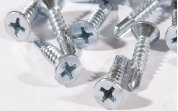Understanding the Importance and Application of Shear Studs in Construction and Engineering
The Role of Shear Studs in Construction and Structural Engineering
In the realm of construction and structural engineering, shear studs play a crucial role in ensuring the safety, stability, and longevity of various structures. These small yet powerful components are typically made of welded steel and are primarily used in composite construction, which combines the strengths of different materials to create more efficient and robust structures.
Shear studs are primarily employed to enhance the bonding between concrete and steel components, such as beams and slabs. When integrated into a composite beam, they act as anchors that allow the concrete to effectively work in conjunction with the steel during loading conditions. This connection ensures that the tensile and compressive forces are adequately transferred between the materials, maximizing their overall structural efficiency.
One of the key advantages of using shear studs is their ability to improve the load-bearing capacity of a structure. By allowing concrete and steel to act together, shear studs enable structures to support greater loads without significantly increasing the overall weight of the system. This is particularly beneficial in high-rise buildings and bridges, where every pound matters. Furthermore, the enhanced load capacity can lead to cost savings in terms of material usage and reduced structural dimensions.
The installation of shear studs is a critical process that must be executed with precision. Typically, shear studs are welded to the top flange of a steel beam prior to the placement of concrete. The welding process involves high temperatures that create a strong bond between the stud and the steel, ensuring that they perform effectively under stress. After the concrete is poured and cured, the shear studs create a mechanical interlock that distributes loads more evenly along the structure.
shear studs

Another important aspect to consider is the spacing and configuration of shear studs
. The design must comply with relevant safety codes and standards, which dictate the number and placement of studs based on factors such as load requirements, material properties, and environmental considerations. Engineers must carefully calculate the shear capacity and evaluate the expected loads to determine the appropriate specifications for each project.In addition to enhancing structural integrity, shear studs also contribute to the overall fire resistance of composite constructions. The presence of concrete serves as a protective layer around steel elements, significantly increasing the time it takes for the steel to reach critical temperatures during a fire. This delay in the weakening of steel can be crucial for ensuring the survival of both the structure and its occupants during emergency situations.
Despite their advantages, the use of shear studs is not without challenges. Improper installation can lead to inadequate bonding, which may compromise structural performance. Therefore, rigorous testing and inspection are necessary to ensure that shear studs are installed correctly and meet all relevant standards.
Moreover, advancements in construction technologies and materials continually evolve the role of shear studs. Innovations in welding techniques and materials may enhance their performance further, leading to improved safety and efficiency in construction practices. Additionally, the integration of smart technologies may provide real-time monitoring of structural health, allowing for better maintenance and timely interventions.
In conclusion, shear studs are indispensable components in modern construction and structural engineering. Their ability to enhance load capacity, improve fire resistance, and create effective composite structures makes them vital for the safety and longevity of buildings and bridges. As engineering practices evolve, the importance of shear studs will undoubtedly continue to grow, underscoring the need for ongoing research, development, and adherence to safety standards in the field. Embracing these innovations will not only lead to better-performing structures but also contribute to the overall advancement of the construction industry.
-
Weatherproof Plastic Expansion Anchors for OutdoorKabarJun.06,2025
-
Sustainability in the Supply Chain: Eco-Friendly TEK Screws ProductionKabarJun.06,2025
-
Load-Bearing Capacity of External Insulation FixingsKabarJun.06,2025
-
Double Head Bolts: Enhancing Efficiency in Industrial MachineryKabarJun.06,2025
-
Corrosion Resistance in Chipboard Screws: Coatings for Wholesale DurabilityKabarJun.06,2025
-
Butterfly Toggle Bolts : Enhancing Structural ResilienceKabarJun.06,2025
